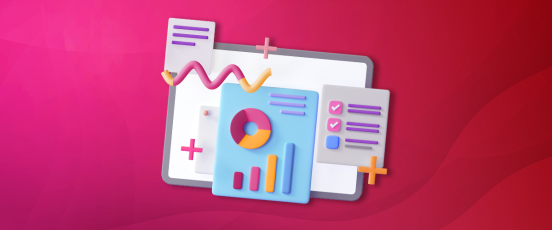Top analytics trends for 2020

In this last year, we’ve witnessed a lot of talk around future analytics technologies – from the AI takeover, to the Internet of Things revolution. In 2020 we’ll see theory turn into practice, with organisations applying these technologies and concepts into their everyday business to embed data culture and spur digital transformation. This article will explore the themes and technologies we can expect to see at the forefront of innovation in the analytics sector in 2020…
Augmented Analytics
After rising to fame in 2019, Augmented Analytics will remain as one of the biggest analytics technologies in 2020.
In a nutshell, augmented analytics see the best of business intelligence fused with the best of artificial intelligence. What makes this combination so special is that it automates the process of finding data, preparing it for analysis and generating insights.
What does this mean? Well, for businesses, the process of driving value from the data they create will take just a fraction of the time it would take using a more traditional approach.
But what really sets augmented analytics apart is its ability to turn mere data into actionable insights.
Traditional analytics can be used to get insights but these insights would typically have to be decoded by a data expert to help the wider business understand what these actually mean. On the other hand, augmented analytics explains what these data insights mean in real-life, empowering normal business users to explore their data to generate valuable insights.
Hailed as “the future of data analytics”, it’s predicted that by 2020, augmented analytics will be a leading driver of the purchases of analytics and business intelligence platforms, and it’s sure to become a technology that’s in the face of the mainstream as time goes on.
Blockchain
Although still a relatively immature technology, there has a lot to be said about Blockchain.
As a simple definition, blockchain refers to digital information stored in a public database.
When you hear this, the word bitcoin may come to mind, but the uses of blockchain expand way beyond cryptocurrency…
Blockchain is transforming the way organisations keep records and make transactions. It’s being used for everything from creating a more transparent supply chain, to preventing identity fraud, promoting safer data sharing and authenticating conditions for securer transactions.
The potential for this technology is big, but it’s expected that before blockchain changes the world, we’ll first see it streamlining business operations to reduce costs and allow faster transactions.
Automation will be a key theme, with blockchain being used to automate actions, events and payments as soon as conditions are met, without being bound to the manual review process which so often leads to delays.
It’s also set to bring about greater security. Data stored in the blockchain is distributed and encrypted which means that it’s notoriously difficult to hack, plus, it allows for increased accountability since the data is not editable and can be viewed by all parties.
Overall blockchain will allow for greater peace of mind when it comes to business security, and it’s definitely one to watch out for in 2020.
Data and analytics strategy
Data is a buzzword that’s been on most businesses’ radars over the past few years, yet research shows that fewer than 50% of documented corporate strategies mention data and analytics as key components for driving value.
Over the next year this is set to rapidly change, with Garner predicting that by 2022, 90% of corporate strategies will explicitly mention analytics as an essential business competency.
The concept of data strategy is something that will turn much of the hype that we’ve witnessed around data over the past few years into tangible and practical outputs for organisations.
Data strategy will become a core part of organisations’ overall strategy in order to harness data as an asset to achieve business objectives, make forward-looking decisions and drive better performance.
This will involve organisations clearly defining their business goals, problems and plans for the future, and establishing how data and analytics can help them to achieve their desired outcome.
Many industry giants are already leading on this, but in 2020, we’ll see this becoming more of a common practice across businesses of all different shapes and sizes.
Data-driven culture
In 2020, the emphasis on data culture will be just as important as the technology itself. A large part of this is likely to require the value of data communicated to the wider organisation in order to embed this into company culture and improve data literacy to support data-led initiatives.
2020 will see the rise of “citizen data scientists”, where the normal business user will become empowered to analyse their data directly without having to go through the middle-man data expert which currently causes delayed insights and misinterpreted information.
Some predict that this will eradicate the need for data scientists altogether, but in reality, it’s likely to simply leverage their expertise further, with data scientists playing a more strategic role in driving data culture. Gartner even predicts that by 2023, 60% of organisations with more than 20 data scientists will require a professional code of conduct incorporating ethical use of data and AI.
On top of this, the concept of data maturity is setting the scene for a world where data is truly seen as a modern-day corporate asset. Research by Deloitte shows that 96% of executives believe that using the right tools to get the most out of this data will become more important than ever over the next few years.
As data maturity increasingly becomes a core measure of strategic, organisations will be urged to assess where they are in their own data journey and adopt new technologies and practices to advance in their level of maturity.
Natural Language Processing and Conversational Analytics
Natural Language Generation and Conversational Analytics – two technologies that we’re all more familiar with than we might think.
Our very own Alexa is going beyond simply responding to requests to play your favourite Beyoncé track and is now being put to work to answer complex data queries.
Natural-language generation works to humanise data to help users to better understand what insights mean in a real-life context.
For example, a sales director could simply ask “What are the sales for product A this month compared to the sales for product B this month, as a bar chart” and the data will be neatly displayed as requested.
Chatbots are perhaps the most common way this will be used in the everyday business, with many organisations already having their own resident chatbot to provide 24/7 human-level support and a personalised experience for both employees and customers.
Edge computing
Edge computing – the latest buzzword in the analytics space.
Edge computing can be defined as: “the practice of processing data near the edge of your network, where the data is being generated, instead of in a centralised data-processing warehouse.”
In simple terms, this means that large amounts of data can be processed near the source. This not only reduces the cost associated with high internet bandwidth usage, but it also allows applications to respond almost instantly, even in remote locations.
Research by the IDC predicts that by 2021, 45% of IoT data will be stored, processed and analysed close to or at the edge of the network, meaning that over 6 billion devices will be connected to edge computing systems.
Driverless cars are the ultimate picture of what’s possible with this technology, but it will also start to be increasingly used in everyday business.
Hailed as the “future of cloud”, edge computing brings the benefits of cloud technology directly to businesses. Not only is it faster and more reliable because of its close proximity to the connected applications, but it’s also more secure since it allows sensitive information to be filtered.
It’s also a cheaper way for organisations to scale their operations without having to invest in expensive infrastructure upfront, and it’s bringing greater speed and efficiency to the technology we use.
To learn more about how you can stay ahead of the curve with the latest data analytics technologies, contact us.



